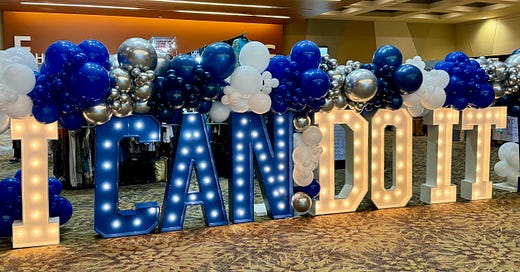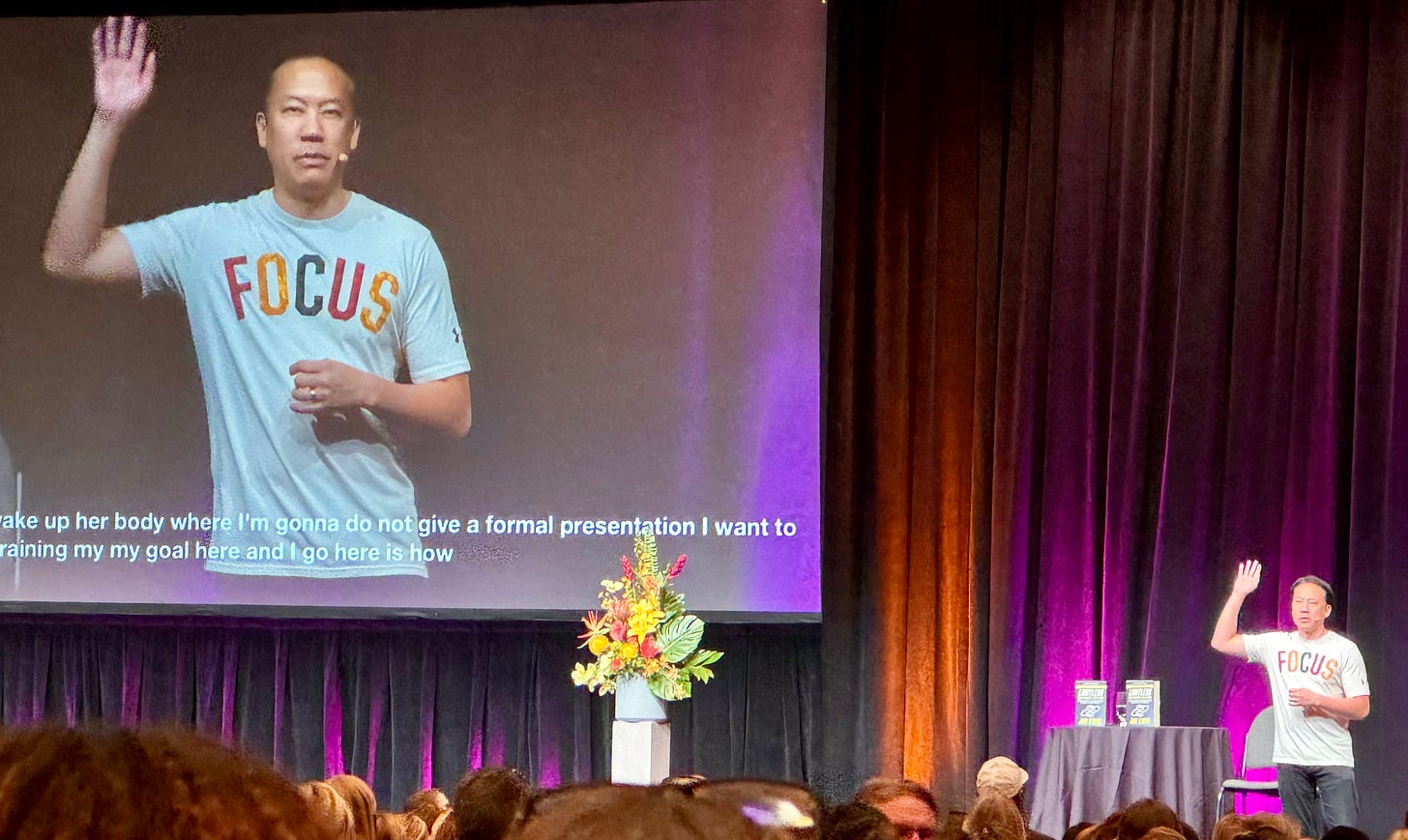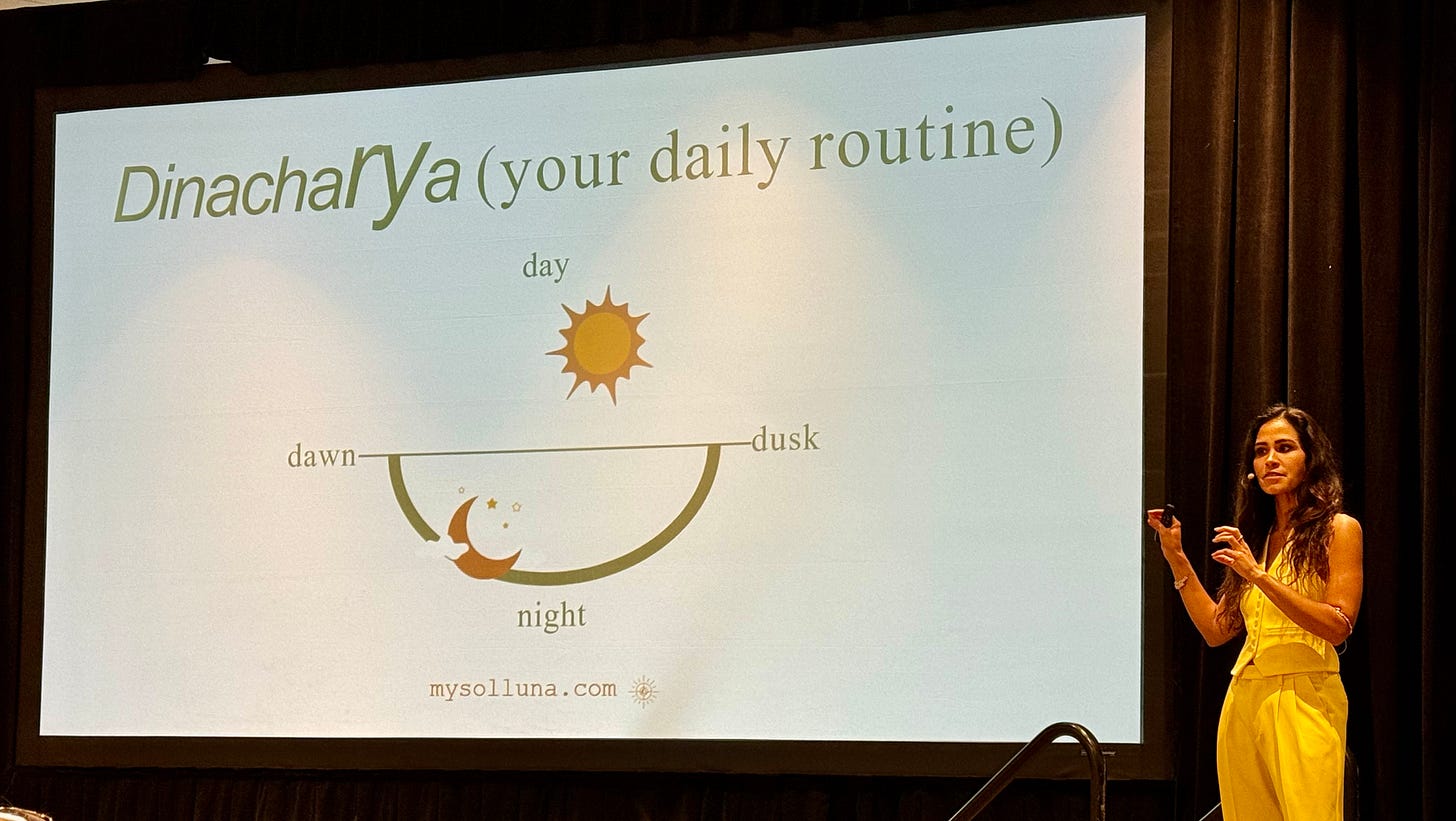My Takeaways from I Can Do It!® Phoenix 2024
Plus last chance to enter the March Brain Training raffle
I’m Brandon Wilson. I am constantly working toward improving my mind, body, and spirit using various ancient techniques and cutting-edge biohacking tools and devices. I want to be healthy, but not at the expense of being happy. This simple idea is what it means to be wellthy.
First time reading? Let’s get you in the club.
🎧 New Feature: Audio Teaser
Be Wellthy Club Members are getting a supersized audio version with my unabridged event recap. Here is a short teaser.
Louise Hay, founder of Hay House, started the I Can Do It!® event in 2004. The annual event showcases self-help teachers, spiritual guides, and healing experts worldwide. Some have described it as a retreat for the mind, body, and soul. This was my first time attending the event, and I’m excited to share my experience.
Jim Kwik’s keys to better memory and faster learning
Jim Kwik is one of the leading authorities on memory and learning. I met him at the 7th Annual Biohacking Conference in Orlando, and he always delivers with wisdom and practical techniques.
Have you ever said, “I can never remember names?” Jim Kwik says, “If you fight for your limitations, you get to keep them.” He also says there is no such thing as a bad memory. There’s a trained memory and an untrained memory.
Jim calls his learning framework the 3 M’s: Mindset, Motivation, and Methods.
To assess your mindset, ask three questions:
What do you believe is possible?
What do you believe you’re capable of?
What do you believe you deserve?
Motivation is not something you have; it’s something you do. The formula for limitless motivation is the following:
P x E x S3
P = Purpose
E = Energy
S3 = Small, simple steps
There are various methods, and some work better than others. Did you know we have different brain types that affect our thinking and learning? Discover yours with the free Kwik Brain C.O.D.E. quiz.
“What you see is evidence of what you believe.” —Wayne Dyer
Gabby Bernstein’s Happy Days
Gabby Bernstein is a best-selling author, speaker, and podcast host with a loyal following who showed up at the event. Gabby has overcome trauma, including drug addiction, and shares her story and methods to empower people to heal and live a happy life. Gabby says life is a journey of unlearning and remembering. One of her most profound statements is that trauma is the inability to be present.
“Forget about what you think you need, and focus on how you want to feel.” —Gabby Bernstein
Gabby’s latest book, Happy Days, provides a clear path to releasing inner child wounds, unlearning fear, and remembering love so you can enjoy inner peace daily.
Finding purpose through the Enneagram
One of my majors was psychology, and I learned about various personality tests. I’ve taken the Myers-Briggs Type Indicator (ISTJ). Somehow, I’m just now learning about the personality type model called the Enneagram.
The word Enneagram comes from the Greek words “ennea,” meaning “nine,” and “gammos,” meaning “something written” or a “figure.” The framework classifies personalities into nine different types, such as perfectionist, creative, and peacemaker.
I attended a fascinating talk by Dr. Robert Holden and Dr. Deborah Egerton, who explained how the Enneagram can help us identify our true purpose. Our purpose is always with us, even if it feels like we aren’t aligned with it. I wanted to pick up Dr. Egerton’s book Enneagram Made Easy, but it was sold out. I feel like I’m becoming more aligned with my true purpose, and I will explore using the Enneagram for deeper insights.
The four cornerstones of wellness
Kimberly Snyder is an author and holistic wellness expert. Her approach to wellness is through four cornerstones:
Food
Body
Emotional wellbeing
Spiritual growth
I have certainly paid a lot of attention to food and body, but I will admit I should focus more on the last two. Kimberly shared three keys to optimal wellness.
Keep reading with a 7-day free trial
Subscribe to Be Wellthy to keep reading this post and get 7 days of free access to the full post archives.






